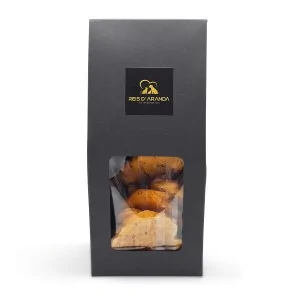Its name says it all: the Vienna blue rabbit comes from Austria. Not only is it beautiful with its shiny blue-grey...
THE BICHÓN FRISÉ
THE ORIGIN OF THE BICHON FRISE
The Bichon Frise (Didi barnacle) is a dog of European origin, descended from the Maltese or Water Spaniel. The name ‘bichon’ is actually the diminutive of ‘barbet’ which in turn is the diminutive of ‘barbichon’. It is an affectionate and friendly breed. The breed is believed to be of French origin, with origins in the Mediterranean. Many centuries ago, dogs called Barbets or Water Dogs were crossed with small white lap dogs, creating four types of ‘barbichons’, a name which would later be shortened to Bichon. These include the Bichon bolognese, the Bichon habanero, the Bichon maltese and the Bichon de Tenerife, the latter being eventually recognised as the Bichon frise, which was developed in the Canaries on Tenerife. It is probable that it was brought to this island by Spanish sailors between 1200 and 1300. Around 1500 the Bichon de Tenerife was very popular in the European courts especially in Spain and Italy, the popularity of this breed can be seen in paintings of several Spanish artists, among them Francisco de Goya, as well as in other Renaissance works.
It later became popular in France (being one of the dog breeds owned by Marie Antoinette) and after the French Revolution, this bichon moved from the attentions of the court to surviving as best he could in the streets of French towns and cities. In this way the genetics of the breed gained great strength, as only the healthiest and hardiest managed to survive. But its beauty and disposition is such that it was eventually picked up by the general public. In the 1930s, several French breeders established the breed, which was registered with the French Kennel Club in 1934.
For a long time it was part of street, circus and puppet shows, thanks to the ease with which it is trained and its physical endurance.
The first dog registered in Belgium was Pitou, born on March 23rd 1924 and was registered in the Belgian Stud Book (LOSH) in 1932. The No. 1 in the French studbook (LOF) is attributed to Ida, a female Bichon Frisé on October 18, 1934, while the FCI recognised it as a breed in 1959. The present French name ‘Bichon à poil frisé’ was given in 1978.
THE BICHON FRISÉ DURING THE FRENCH REVOLUTION
Let us place ourselves in France at the end of the 18th century, in 1789. The ‘public’ coffers are empty. Bad harvests have led to a shortage of flour, driving the people to despair. The court no longer found the support of the nobility and the clergy it once had...
The factors as a substratum for a possible popular rebellion are in place. Perhaps all that is lacking is the spark. High echelons of the monarchy and the tabloids of the time attributed the famous and false declarations of Queen Marie-Antoinette: ‘S'ils n'ont pas de pain, qu'ils mangent de la brioche’ (If they have no bread, let them eat cakes), wishing for a total break with the people and an uprising that could be managed politically for the well-being of a few, one of the major architects being the king's younger brother; Louis-Stanilass who, after the death of his brother and nephew, reigned for a very short period of time.
The third estate, encouraged by the victory of the American War of Independence, the English constitutionalist-liberal example and the ideas of the Enlightenment, rose up in revolt. In just a few years, the monarchy, from enjoying absolute power, was arrested on the verge of secretly fleeing France and taken prisoner in Paris.
This was the appearance of the bichon frisé, whose fate was to change radically. It would not be difficult to trace its history back thousands of years, but for a variety of reasons, it became a breed of dog adopted by European monarchies. It may have been Ferdinand I, who gave Charles I and V so many headaches, who introduced them to the court. There is also evidence that they were the favourite of Elizabeth I, the Protestant queen.
This breed was, along with others such as the Papillon and the Pug, one of Queen Marie Antoinette's favourites and she had several in her palace, although, although she loved them madly, she was not careful with certain aspects of their care (such as brushing their fur).
But the bichon frisé, like society as a whole, was not going to be immune to insurrection, and with the French revolution, its own dethronement would come... but it was to survive.
With widespread hostility towards the royal family, towards the nobility, who desperately awaited an intervention from Prussia and the European absolutist monarchies that was slow in coming, the bichon frisé was forced to survive in the streets, in a France that was to experience many years of turmoil. The revolution, the republic... never without tension, the Napoleonic empire with its splendour and its twilight. In short, in liberal France, being a royal dog was not, in principle, likely to win him much sympathy?
What did the future hold for the bichon frisé?
On the one hand, fortification. Many dogs of his breed died, but the years of wandering and hardship helped him to improve genetically. On the other hand, his tender personality and vivacity won the sympathy of the French people, who soon took him in as a pet and to work in the circus. And even if France will live through the restoration, today, the bichon frisé reigns, perhaps still in the courts, but also in many of our homes, where it is a bastion of family ties, affection and beauty.
THE STANDARD OF THE BICHON FRISE
The Bichon Frisé stands out as a small but incredibly muscular and strong dog, especially with regard to the ribcage (which is very broad under the coat) and the hind legs.
Well proportioned to the body. The eyes and nose, the three black points being easily visible on a totally white head, should form an equilateral triangle. The lips are dark and tight fitting, the muzzle is broad and the bite is scissor bite (although a pincer bite is tolerated). The eyes are very dark, of medium size, rather round in shape, never almond-shaped or protruding. They should not be set obliquely. The pigmentation of the eyelids should be completely black. When the dog looks forward, the whites of the eyes should not be visible. The ears are drooping and well covered with abundant hair. Set on above the eye line, forming an equilateral triangle, they hang vertically along the cheeks. When stretched forward, the leather should reach at least to the corner of the lips, and in most the leather reaches halfway down the muzzle. The ears are mobile, especially when something catches the dog's attention.
The neck is rather long, carried high and proud. It is round and slender close to the skull, gradually widening to set smoothly into the shoulders. Its length is about one third of the length of the body. No dewlap.
The tail is curled over the croup (not curled) and well furnished with hair.
The Bichon Frisé has a quick and lively movement, holding its head proudly high.
In terms of weight, an ideal adult Bichon Frisé should weigh between 3 and 5 kg, being a small but robust breed. As for height, the FCI states that the height at the withers for males should be 23-28 cm and for females 23-26 cm; English lines are usually more robust than Russian or American lines (the latter is very popular in Asia, with China and South Korea standing out in this continent in the breeding of the Bichon Frisé).
The only colour permitted is pure white, with small patches of pale cream permitted up to the age of 12 months.
THE BICHON FRISÉ HAIRDRESSING
The Bichon Frisé should be trimmed with scissors, ideally once a month. It is helpful to use an anti-static spray to make it easier to sculpt the coat during the cut.
Caring for the Bichon Frisé's coat requires time and dedication, as the hair tends to tangle. In fact, it is necessary to brush the Bichon Frisé once a day, preferably with a brush with long, separate metal prongs, combing the coat in layers, in all directions, finishing in favour of the coat, using a soft carding brush on the knots or tangles to undo them.
If the knots are very tangled, they can be cut with a knot cutter. If there are only a few knots, they can be manually untangled with the help of a comb. This gives an idea of how interesting it is to go regularly to the grooming salon to have your Bichon Frisé's coat well trimmed.
The cut is made with straight scissors on the back side and with a few curves to give it shape. Try to make a rounded shape at the hips. The hindquarters are straight on the inside and rounded on the outside.
The lower loin is made with straight scissors. The forelegs should be cylindrical in shape. For the neck, it is advisable to use curved scissors, so that it is arched.
The head should be the last part of the body. The eye area should be cleared and rounded off with straight scissors.
THE HEALTH OF THE BICHON FRISÉ
-KNEAD LUXATION: This is a weakness of the kneecaps or stifles which can be controlled by selective breeding.
-SIGHT LOSS: Loss of sight may occur, even in very young dogs. Recommendations for this type of problem are to avoid breeding the affected specimen.
-GLAND CALCULUS: This is a natural predisposition of small breed dogs, which may be worsened by excess protein, magnesium or phosphorus in the dog's diet. Symptoms may include frequent urination, listlessness, malaise and weakness. Surgery is sometimes necessary, but can be avoided with frequent walks, a protein-controlled diet and sufficient exercise.
-MOUTH INFECTIONS: Due to the size of the teeth and the fact that the lower incisors are sometimes gently crowded, they should be cleaned daily with special treats and toothbrushes, and an annual cleaning of the mouth is recommended if necessary.
A good option is a coarse-grained but convenient and low sodium dog food such as Reis d'Aranda Angus Beef dog food.
THE BICHON FRISÉ AS A PET
The Bichon Frisé is a wonderful choice for absolutely all types of families, especially for those with children or elderly people, its fun and sweet nature makes it very suitable for this, also standing out as a therapy animal.
It is sociable and does not pick fights nor is it rough with other animals, having in fact a quite naive and innocent personality (although they are very intelligent).
Leave a comment
Log in to post comments
















